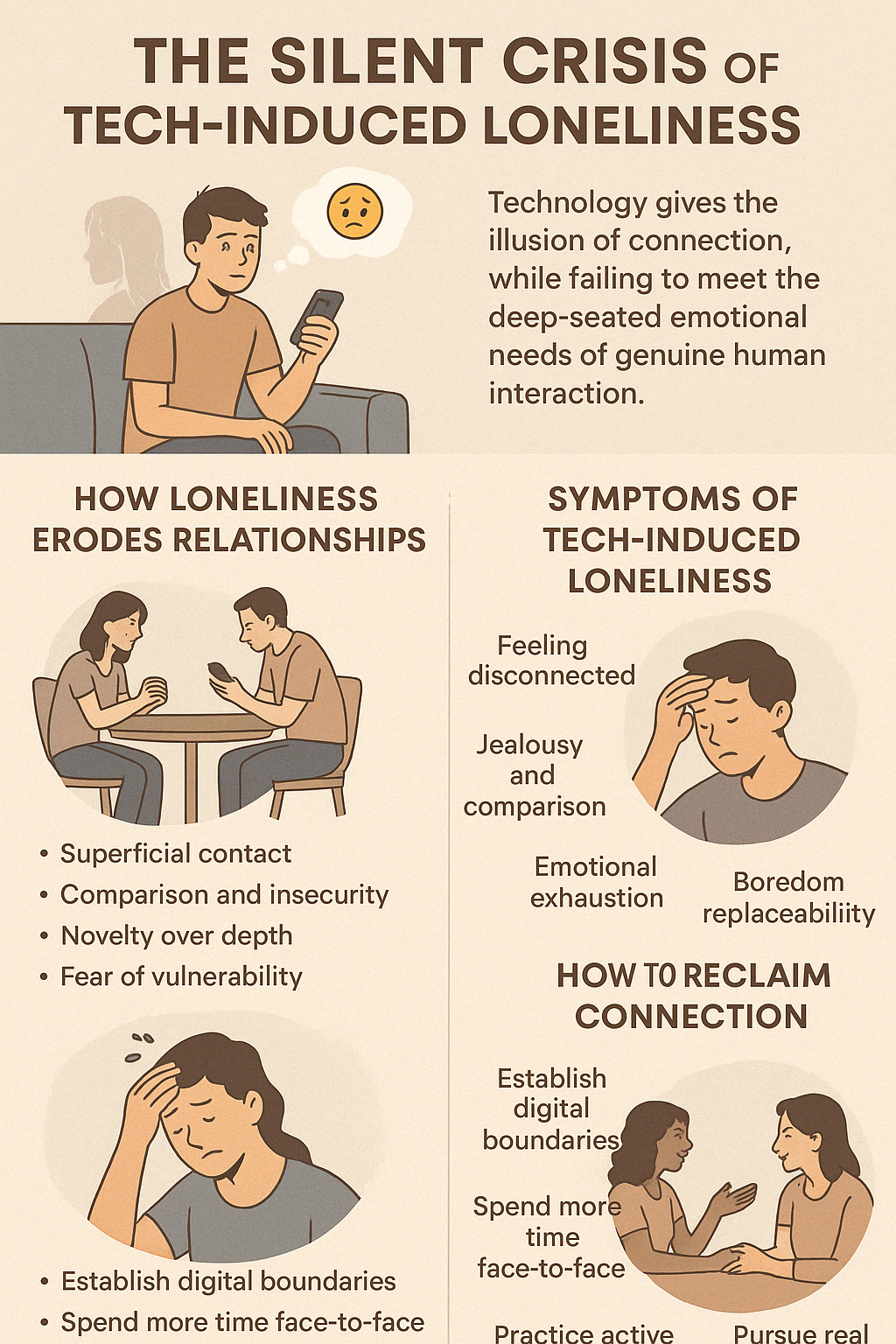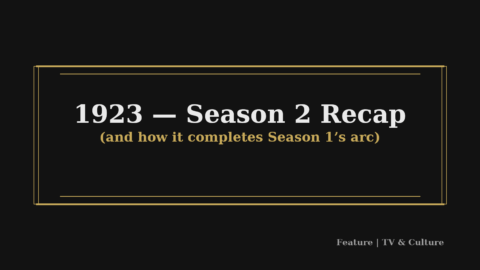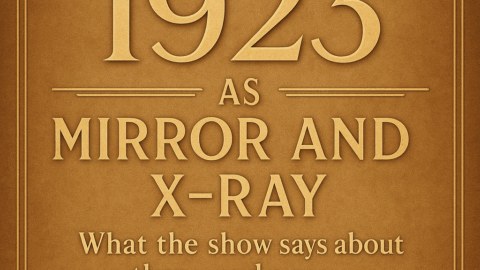Introduction: The Paradox of Connection
Technology has given us instant communication, unlimited information, and constant access to people across the world. Yet paradoxically, studies show that rates of loneliness, anxiety, and depression have skyrocketed in the most technologically connected societies.
At the heart of this phenomenon is an emotional dissonance: technology provides the illusion of connection without fulfilling the fundamental human need for deep relational bonds.
Loneliness — often felt but rarely understood — becomes the emotional residue of superficial interactions, affecting not only individuals but the very health of relationships themselves.
1. The Emotional Nature of Loneliness
Loneliness is not simply being alone; it’s an emotional state — a feeling of being unseen, misunderstood, and disconnected even in the presence of others.
Technology magnifies this emotional wound by:
- Replacing presence with performance (e.g., curating lives on social media rather than sharing them authentically).
- Stimulating, but not satisfying the brain’s social reward systems.
- Training people to value attention metrics (likes, followers) over genuine emotional intimacy.
As a result, emotions such as emptiness, envy, sadness, and insecurity become chronic companions.
2. How Technology Alters Relationship Dynamics
Technology reshapes the “emotional architecture” of human relationships in these ways:
Surface-Level Engagement
- Conversations often become fragmented (texts, memes, quick likes).
- Attention spans shorten, making deep conversations rare.
- Emotional cues like facial expressions, tone, and timing are lost online, leading to frequent misunderstandings.
Comparison and Insecurity
- Social media amplifies comparison anxiety — people measure their relationships, families, and friendships against idealized images others portray.
- Feelings of inadequacy create emotional walls and defensiveness within real relationships.
Addiction to Stimulation
- Constant scrolling and notifications train the brain to seek novelty over depth.
- People become impatient with the slow, sometimes mundane processes of building real trust and intimacy.
Fear of Vulnerability
- Online communication allows control and editing — reducing the practice of real vulnerability.
- In relationships, partners may struggle to share imperfections, leading to emotional distance.
3. The Psychological Cycle: From Loneliness to Relationship Breakdown
Here’s how technology-induced loneliness subtly breaks down relationships over time:
- Superficial Contact
Frequent but shallow interactions create a false sense of closeness. - Unmet Emotional Needs
Deeper needs for empathy, validation, and belonging go unfulfilled. - Growing Resentment or Emotional Numbness
Partners or friends may feel taken for granted, unseen, or emotionally starved. - Withdrawal or Conflict
Emotional withdrawal or passive-aggressive conflicts emerge. - Breakdown
Eventually, the relationship either becomes hollow or collapses entirely.
4. Emotional Symptoms and Warning Signs
Technology-fueled loneliness manifests in relationships as:
- Feeling disconnected despite frequent interaction.
- Increased jealousy or comparison to other couples or friendships.
- Boredom, dissatisfaction, or the feeling of being replaceable.
- Emotional exhaustion from constant digital stimulation but relational emptiness.
- Misinterpretation and escalation of minor conflicts due to poor communication cues.
5. Pathways to Healing: Building “Analog” Emotional Connection
The good news is that loneliness and emotional damage caused by technology can be healed — but it requires conscious countermeasures:
Digital Boundaries
- Scheduled “phone-free” hours or zones.
- No devices at dinner, dates, or meaningful conversations.
Prioritizing Face-to-Face Time
- Even short, in-person meetings strengthen emotional bonds more than long text conversations.
Practicing Active Listening
- Full attention without multitasking.
- Listening to understand, not to respond.
Vulnerability Over Performance
- Share fears, failures, and authentic emotions — not just curated highlights.
- Normalize imperfection in your communication.
Emotional Recalibration
- Recognize when emotional needs are being substituted with technological stimulation (doomscrolling, mindless browsing) and intentionally seek real human interaction.
6. Conclusion: Restoring the Sacredness of Connection
Technology is a tool — but when allowed to mediate our emotional lives, it subtly replaces authentic presence with perpetual distraction.
Loneliness, if ignored, can silently erode even the most loving relationships.
But when recognized and addressed intentionally, it can be the signal that leads us back to what makes life worth living: real human connection.
As Ricky Gervais said:
“The world began to crumble when feelings started overruling facts.”
We might add:
The world also crumbles when virtual feelings replace authentic connection.
Choosing presence over performance — and heart over convenience — is how relationships survive and thrive in the technological age.







